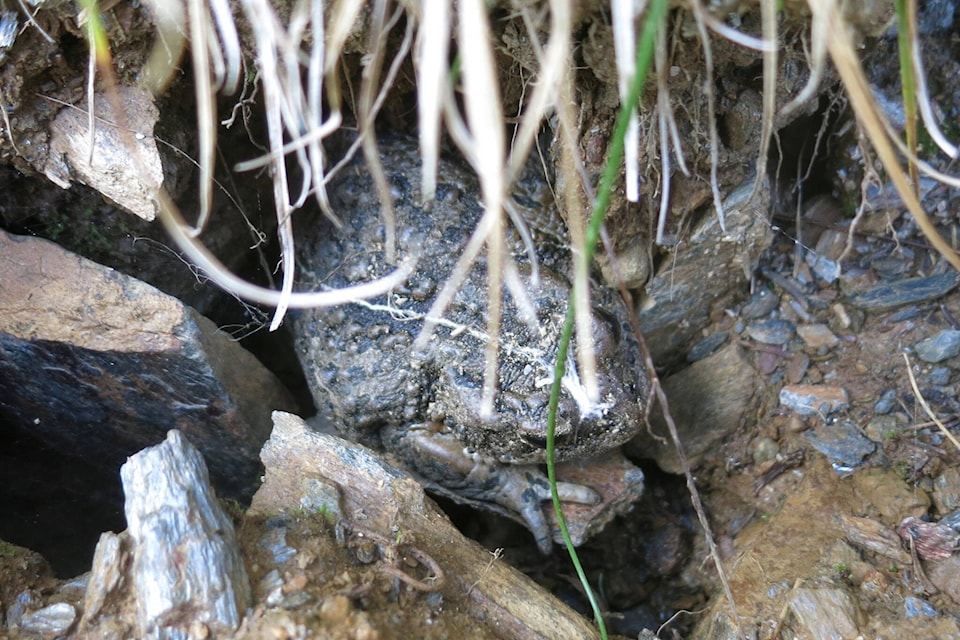By Ed McMackin, biologist by profession and naturalist by nature
The ways in which members of the animal kingdom survive the winter in the Northern Hemisphere are as varied as the number of species. Tree squirrels sleep off the winter in well insulated nests high up in a tree, waking up on the occasional sunny day. Flying squirrels use holes in old trees for their winter quarters. Bears often seek shelter in the cavity of a bank, under the roots of a tree, or even in the center of a brush pile. Beavers occupy an above water “room” in their dams, while muskrats construct a smaller lodge in which to winter. In any case, most animals, except for birds, seek a dry, warm dwelling in which to spend the winter. But not so with frogs, salamanders, and toads.
So where do frogs spend the winter? Well, usually in a very moist environment like the mud at the bottom of a pond. But perhaps, it’s not quite that simple. Many pond bottoms are covered with dead and decaying aquatic plants from the previous summer’s growth. This extra cover provides additional protection to hibernating frogs.
A classmate of mine once told me, as an engineer, he was supervising excavation for some bridge project. As the work progressed the shovel brought up a bucket of frozen mud. Frozen in the watery muck, were a number of what looked like lifeless frogs, seemingly in hibernation.
Of all the trails in the Kootenay Lake Region, Haystack Lakes and Haystack Meadows seem to host the most toads. When hiking, I once spotted a large toad at the side of the trail. While approaching and digging out my camera at the same time, the toad, with a quick turn, popped into a burrow. They don’t appear to be alert, but they are!
Contrary to the winter dwellings of frogs, other amphibians seek out a slightly different type of shelter.
Toads and salamanders will hide under rotten logs or forest litter, or share underground dens with ground squirrels and marmots, who don’t seem to be bothered by the amphibious company. They often use the same burrow throughout the year. The same burrow that stays cool and damp in the heat will likely stay above freezing on cold days.
Some of you may have been out on the back roads on a warm August evening and heard a soft trilling sound. There may be just one or there may be three or four sources of the sound. It sounds steady and lower pitched than a cricket. The source of the sound is probably the Pacific or Northwest toad, which may be a sub-species of the American toad (Bufo americanus).
I have tried to sneak up on these toads, but it is almost impossible to avoid stepping on a dry, crackly leaf in their habitats full of deciduous shrubs and trees. When disturbed, they will instantly quit trilling, perhaps not starting again for another five minutes. That may seem like hours, when one is poised in an awkward position.
On visits to Copper Creek Falls (near East Port, Idaho) in the autumn or early spring, I would often find several of those large toads motionless beside some of the rocks in the spray of the 100-foot falls. I suspect the toads remain there all winter, seeking moist spots under the rocks for shelter. In late spring, they disperse over the hillsides.
Animals spend the winter in many diverse kinds of habitats. Not to mention, the diverse structural and physiological changes they also undergo at the onset of winter in order to survive the long sleep of hibernation. I can imagine them saying, “Please don’t bother me I’m sleeping. I need some quiet time!”
READ MORE: Out There: White-tailed Ptarmigan
